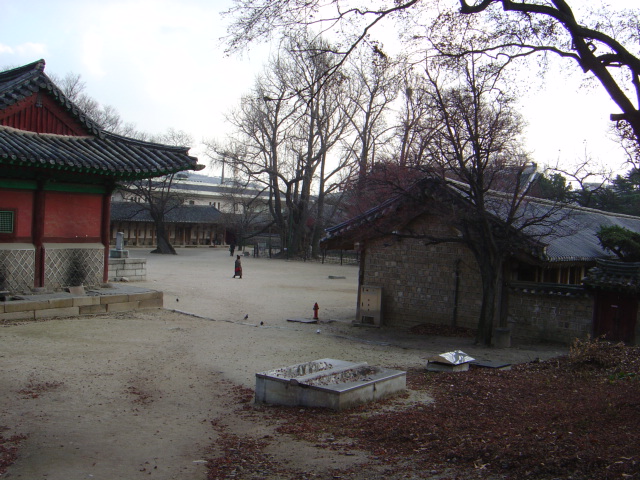- Seonggyungwan
caption=The plaza of the Seonggyungwan.
hangul=성균관
hanja=成均館
rr=Seonggyun(-)gwan
mr=Sŏnggyun'gwanSeonggyungwan, also called Taehak (태학, 太學), was the foremost education institution in Korea during the late
Goryeo andJoseon Dynasties.History
Gukjagam , the highest education system during theGoryeo Dynasty established in November of 992 by King Seongjong.Gukjagam was renamed Seonggyungwan in June of 1304, and then relocated to the old site of Sungmoon-Gwan in 1367 during the reign of King Gongmin near the end of the Goryeo Dynasty.After the founding of the
Joseon Dynasty in 1392, King Taejo relocated Seonggyungwan to Hanseong, currentSeoul , and also founded 360Hyanggyo s nationwide in July of 1398, establishing a national education system.Seonggyungwan was destroyed by fire in 1400 and rebuilt in 1407. Seonggyungwan was rebuilt again in 1601 after it was destroyed during the Japanese invasions.
During the Japanese occupation between 1910 - 1945, royal Seonggyungwan was demoted to private institution and renamed to Gyunghakwon, and Korean education was prohibited and Japanese education was forced nationwide.
After Korea gained independence in 1945, Gyunghakwon was renamed to Seonggyungwan and with the funding from Yurim (confucians) nationwide,
Sungkyunkwan University was established.Buildings and Administration
*Daeseongjeon (대성전): Shrine which holds the memorial for
Confucius .
*Dongmu (동무) and Seomu (서무): Shrines which holds the memorial for Confucius' 10 students, and 18 Korean scholars.
*Myeongnyundang (명륜당): The main study.
*Jongyeonggak (존경각): Library
*Dongjae (동재) and Seojae (서재): Dormitories
*Bicheon-dang (비천당): Examination building
*Jegigo (제기고): Storage building for ceremonial dishes
*Jinsasikdang (진사식당): Dining building
*Jeongnokcheong (정록청): Administration buildingThe institution's administrator had a government rank of sampum (삼품), with lower ranking officials of Jwaeju (좨주), Akjeong (악정), Jikgang (직강), Baksa (박사), Hakjeong (학정), Haknok (학록), Hagyu (학유) as supporting staff.
Education
Seonggyungwan's teachings were mainly
Confucian -related, and was largely aimed at preparing students for government services. The main goal was for the students to pass the civil service examinations, also known asGwageo , which assessed the ability to interpret the Chinese classics in terms of official Neo-Confucian ideology.The set number of students were 150 when Seonggyungwan was founded, and raised to 200 in 1429.
Entrance examinations for Seonggyungwan was extremely harsh, and was only allowed for the sons of high-ranking officials or yang-bans.
There were two ways to be accepted into Seonggyungwan. Either the students had to pass the two admission exams, Saeng-wonsi (생원시) and Jinsasi (진사시), or take the other two examinations, Seungbo (승보) and Eumseo (음서). If they passed these examinations, they were given the opportunity to be accepted.
Once accepted, the students had to complete the curriculum and also fulfill the minimal attendance score of 300 Wonjeom (원점) to qualify for the first test of the civil service exams.
Notable alumni
*
Jeong Inji
*Sin Sukju
*Jo Gwang-jo
*Yi Hwang
*Yi I
*Yu Seong-ryong ee also
*
Education in the Joseon Dynasty
*History of Education
*Gukhak
*Gukjagam External links
* [http://www.skkok.com Official site (in Korean)]
Wikimedia Foundation. 2010.

